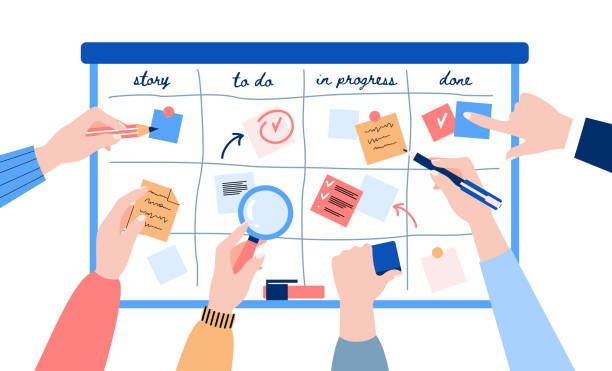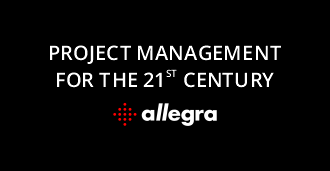Kanban boards for beginners: A complete guide
Overview
Kanban boards for beginners? Why is it helpful to learn how and where to use kanban software? Kanban boards help everyone stay focused on finishing existing work before starting new work. Kanban boards can unify distributed teams. Read on to find out more about kanban for beginners…
1. What is Kanban board
Origin
Kanban originally comes from Japan. Toyota developed the system internally, back in 1947. This also explains how the method got its name: a composition of the two Japanese syllables kan and ban which roughly translates as “signal card”. In those days, the company used Kanban to optimize material flow. Toyota wanted to avoid bottlenecks as well as an excessive stock of production materials at the same time. Kanban was used in Toyota’s production facilities, where it also influenced agile development in IT and other departments.The result of these efforts is now also referred to as the pull method, as supplies are only ordered once stocks are coming to an end. Moreover, Kanban can be combined with other agile methods such as Scrum ( scrum describes a set of meetings, tools, and roles that work in concert to help teams structure and manage their work.)
Kanban boards for beginners:
- management technique to monitor and simplify the task workflow. It allows you to visualize every step of your workflow on a board called “Kanban board”.
- organize and manage the working process in a simple and appropriate way.
- It aims to help you visualize your work, maximize efficiency, and improve continuously.
- recognizes that existing processes, roles, and responsibilities may have value and are worth preserving.
Example: Work-in-process, or WIP, limits are another key Kanban concept that can help all teams, including development teams, actively manage the flow of work through their system. In this Kanban board example, the team is using WIP limits to limit the number of work items that can exist in any given step at any given time.

2. Advantages of Kanban boards
Kanban is great for improving workflow and minimizing the time cycle, but it also increases the process flexibility. If you’re looking for a methodology that can bend, not break, with the winds of change, then kanban is for you.
One of the first principles of kanban is to make small incremental changes to existing processes. Teams that want to start a new approach to project management without turning existing processes upside down will naturally find a good fit with the kanban methodology.
To summarize Kanban allows for Continuous improvement, flexible processes. Kanban helps visualize your work, limit work-in-progress and quickly move work from “Doing” to “Done.” Kanban is great for teams that have lots of incoming requests ( size and priority varying).
3. Elements
David Anderson established that kanban boards can be broken down into five components:
- Visual signals: a kanban board are the visual cards (stickies, tickets, or otherwise)
- columns: Each column represents a specific activity that together compose a “workflow”. Complete/ to-do ect.
- work-in-progress limits: These WIP limits are critical for exposing bottlenecks in the workflow and maximizing flow. WIP limits give you an early warning sign that you committed to too much work.
- a commitment point,
- and a delivery point.
And three levels of support in a workflow:
The scope with which Kanban is used within a company can be represented by “flight levels”. Dr. Klaus Leopold, another Kanban pioneer, illustrates where Kanban can support workflows using three different levels:
- Flight Level 1 – Operational level: At this altitude – the lowest – the team of specialists can be found whose daily work centers around producing the product or providing the service.
- Flight Level 2 – Coordination: The second level therefore concerns coordination among teams. In Kanban, this is where it is ensured that all teams are processing tasks in the right order and are constantly being supplied with work.
- Flight Level 3 – Strategic portfolio management: The third level is reached when not only a project is being coordinated with Kanban, but rather the whole portfolio is organized according to the agile method.
4. Creating a Kanban board ( Task Duration and Critical Parts)
The Kanban Method is a means to design, manage, and improve flow systems for knowledge work. The method also allows organizations to start with their existing workflow and drive evolutionary change. They can do this by visualizing their flow of work, limit work in progress (WIP) and stop starting and start finishing.
- methodology that focuses on just-in-time delivery of functionality and managing the amount of work in progress (WIP).
5. Dependencies
Task Dependencies allow for building relations between cards, to visually connect work items that need doing in bunches. This way, complex work gets broken down into items of a more manageable size, giving you a clear picture of how far along a big job has come.

6.Controlling Projects
This can be managed in practical application through the following activities:
- Move Kanban Cards Between Lists and Boards. …
- Invite Individuals to Kanban Boards, then Assign and Subscribe to Kanban Cards. …
- Add Notes and Hold Discussions on Kanban Card Backs. …
- Attach Checklists or Tasks to Cards. …
- Include Work in Progress Limits. …
- Label or Tag Kanban Cards. …
- Put Due Dates on Kanban Cards.
Principles and pracices are important to differentiate on:
Principles in Kanban for beginners:
Principle 1: Start With What You Do Now
Principle 2: Agree to Pursue Incremental, Evolutionary Change
Principle 3: Respect the Current Process, Roles & Responsibilities
Principle 4: Encourage Acts of Leadership at All Levels
6 Practices in Kanban boards for beginners:
- Visualization: The Kanban board is a visualization of workflows. The design itself is relatively flexible. However, it is important that stations are clear and the relevant limit is shown for each column. To visualize your process with a Kanban system, you will need a board with cards and columns.
- Limitation: Each column may only contain a maximum number of orders. Only once an order card has moved right is the team able to take a new card from the left. This inevitably leads to a more efficient workflow. Limiting WIP means implementing a pull system on parts or the complete workflow. Setting maximum items per stage ensures that a card is only “pulled” into the next step when there is available capacity.
- Management: During the work process, blockades and bottlenecks can emerge. In these kinds of situation, it is necessary to focus the team on clearing these obstacles. Apart from that, observing the workflow can help to correctly distribute capacities for the long term.
- Regulation: Defined process rules are intended to make workflows clearer and more transparent. These rules include the setting of limits as well as determining when a task is considered completed. Process rules must also be a visual and mutable part of the Kanban board.
- Feedback: Feedback forms a necessary component of workflows and is a prerequisite for their improvement. Regular meetings (known as cadences) should be held for this reason. In contrast to Scrum, Kanban does not provide a strict framework for these meetings.
- Kaizen: Processes within a team should always be a work in progress, as according to the theory no optimum can be achieved. Instead, it is important to strive for continuous improvement.

Types of Kanban Boards
The main types of Kanban systems are:
- Production Kanban.
The withdrawal or conveyance Kanban system is concerned with the movement of items and components.
- Withdrawal Kanban.
The withdrawal or conveyance Kanban system is concerned with the movement of items and components.
- Supplier Kanban.
A supplier Kanban can be used as an extension of an internal Kanban system or without internal Kanban system. The aim of Supplier Kanban is to ensure a demand-driven supply of parts by the suppliers.
- Emergency Kanban
Emergency Kanban deals with an unexpected situation that needs immediate attention. Emergency cards usually signal the need for replacement of a faulty or defective part or a sudden change in the quantity of input (product) required.
- Express Kanban
This is a type of Kanban that comes to the scene when there is an unanticipated shortage of parts. They signal that an increasing number of a particular part is required. The main aim is to make sure that there is no slowing down of the manufacturing process.
- Through Kanban
The through Kanban system and Kanban cards are a combination between production and withdrawal Kanban in situations where two different production teams that work together are also physically close to each other.
Summary of Kanban for beginners
Kanban is an essential tool to visualize a working progress and monitor the working in progress levels within one. This is a helpful practice that can help team members focus on the task at hand without distractions or pressure to multitask.
For further reading into similar tasks read on further with agile task management.




